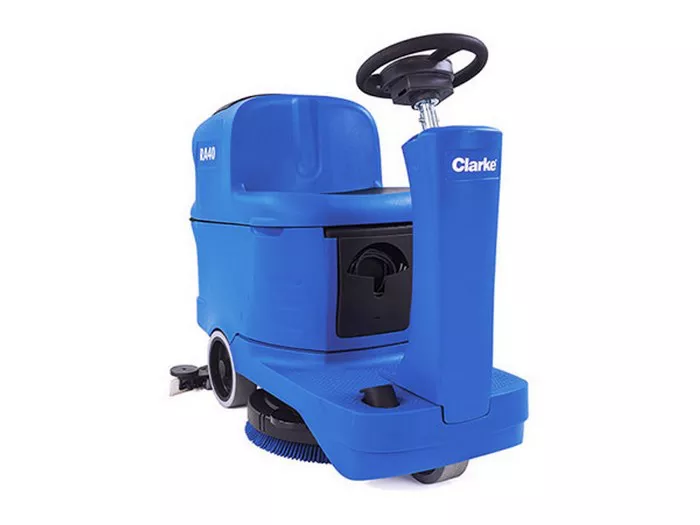In today’s fast-paced life, maintaining household cleanliness has become a daily task for many people. Floors, as the largest part of the home, are often the focus of cleaning efforts. To enhance cleaning efficiency, many households and commercial establishments choose to use floor cleaning machines. So, how do floor cleaning machines work? What is their efficiency? This article will delve into the operating principles, efficiency analysis, advantages, and disadvantages of floor cleaning machines.
I. Definition and Principles of Floor Cleaning Machines
A floor cleaning machine, also known as an electric mop or automatic floor sweeper, is a device powered by electricity that cleans floors by utilizing rotating brushes and a vacuum system. Its core components include batteries, motors, brushes, vacuum systems, and water tanks. When the machine is started, the motor drives the brush to rotate, while the vacuum system sucks dust and dirt into the machine. Clean water flows from the water tank, moistening the brush and cleaning the floor, after which dirty water is sucked back into the tank. This entire process continues in a cycle until the entire area is cleaned.
II. Methods of Using Floor Cleaning Machines
1. Preparation: Ensure that the floor cleaning machine has sufficient battery power and prepare an appropriate amount of cleaning solution as needed. If it is the first time using it, carefully read the product manual to understand the basic operation and maintenance requirements of the machine.
2. Installation of Brushes and Vacuum Systems: Install the brushes onto the machine, ensuring they are secure. If there is a vacuum system, follow the instructions in the manual for installation.
3. Adding Cleaning Solution: Pour the cleaning solution into the machine’s water tank, being careful not to exceed the maximum water level. Some machines may require pouring the cleaning solution directly into a container near the brush.
4. Starting the Machine: Press the power button to start the floor cleaning machine. Select the forward or backward mode as needed and adjust the cleaning speed.
5. Cleaning Process: Move the machine along the designated route, allowing the brush to cover the entire area. For areas with carpets, specialized carpet brushes can be used. During the cleaning process, be mindful of obstacles such as wires and furniture.
6. Cleaning the Dirty Water Tank: When the dirty water tank is full, promptly empty it and clean it. Some machines may have automatic sensing features that stop the machine and alert the user when the dirty water tank is full.
7. Ending the Cleaning Process: After completing the cleaning, turn off the machine’s power and place it in a dry, ventilated area. Regularly clean and maintain the floor cleaning machine to prolong its lifespan.
III. Efficiency of Floor Cleaning Machines
1. Cleaning Efficiency: Compared to traditional manual cleaning methods, floor cleaning machines have higher cleaning efficiency. They can quickly cover large areas, saving time and labor. Especially in commercial settings or large residences, floor cleaning machines can significantly reduce the workload for cleaning personnel.
2. Cleaning Effectiveness: Floor cleaning machines use advanced brushes and vacuum systems to effectively remove dust, dirt, and bacteria from the floor. For stubborn stains, some high-end models are equipped with high-temperature steam cleaning functions, which can deeply clean the floor, achieving disinfection and sterilization.
3. Adaptability: Floor cleaning machines are suitable for various types of flooring, such as tiles, wood floors, carpets, etc. Some models also have multiple brushes and vacuum systems that can be replaced and adjusted according to different floor types to achieve the best cleaning results.
4. Environmental Friendliness: Floor cleaning machines use cleaning solutions for cleaning, which are more environmentally friendly compared to traditional cleaning methods. Additionally, they reduce the use of cleaning agents, thereby reducing environmental pollution. Furthermore, some high-end models adopt energy-saving technology, further enhancing environmental friendliness.
IV. Advantages and Disadvantages of Floor Cleaning Machines
Advantages:
High Cleaning Efficiency: Floor cleaning machines utilize advanced cleaning technology to quickly cover large areas, improving cleaning efficiency. Good Cleaning Effect: Floor cleaning machines can effectively remove dust, dirt, and bacteria from the floor, achieving good cleaning results. Strong Adaptability: Floor cleaning machines are suitable for various types of flooring, such as tiles, wood floors, carpets, etc. Environmentally Friendly and Energy Efficient: Floor cleaning machines use cleaning solutions for cleaning, reducing the use of cleaning agents and adopting energy-saving technology.
Disadvantages:
Higher Cost: Compared to traditional cleaning methods, the purchase and maintenance costs of floor cleaning machines are higher. For some small households or individual users, it may not be economically feasible. Loud Noise: Floor cleaning machines produce some noise during operation, which may be uncomfortable for individuals sensitive to noise. Complex Operation: For some high-end models, the operation may be relatively complex, requiring some learning and adaptation time. It may be challenging for those unfamiliar with the operation. High Maintenance Requirements: Floor cleaning machines require regular cleaning and maintenance to maintain good working condition, which may increase additional workload for some users.
V. Conclusion
In the hustle and bustle of modern life, maintaining cleanliness at home or in commercial spaces is paramount. Floor cleaning machines emerge as indispensable tools in this endeavor, promising efficiency, effectiveness, and adaptability. Through a comprehensive exploration of their operation principles, usage methods, efficiency, and pros and cons, this article sheds light on the fascinating world of floor cleaning machines. From their ability to swiftly cover vast areas to their environmentally friendly features, these machines offer a promising solution to the perennial challenge of floor cleaning. Despite some drawbacks such as higher costs and maintenance requirements, their benefits outweigh the inconveniences, making them an essential asset in the quest for cleanliness and hygiene in today’s fast-paced world.

